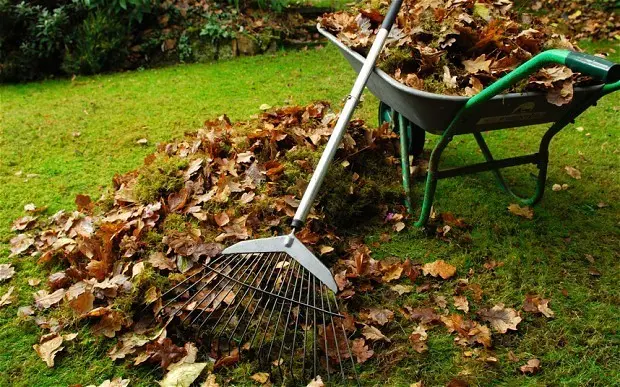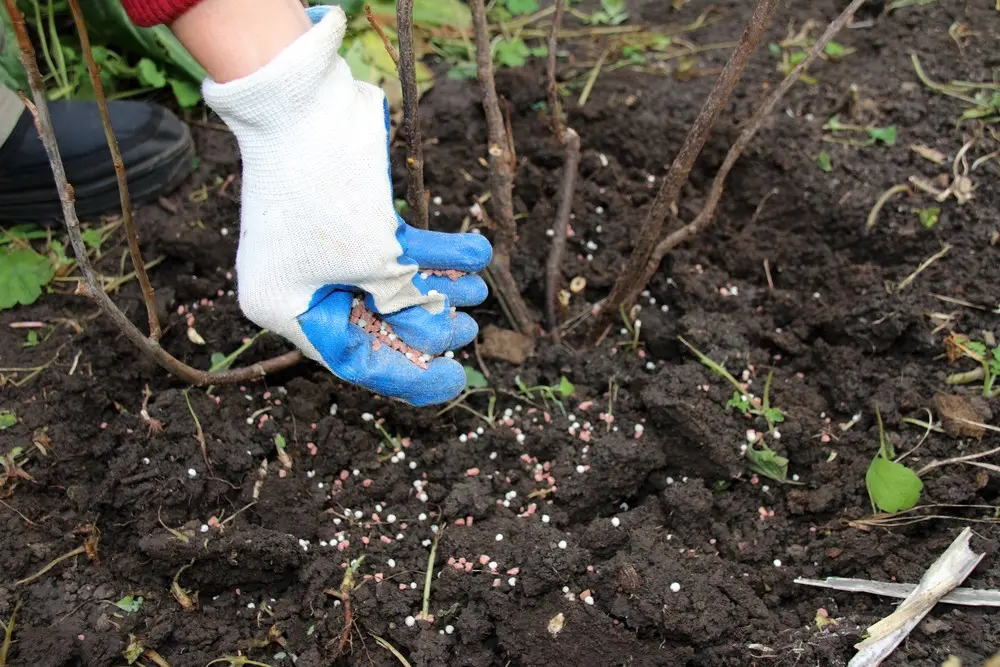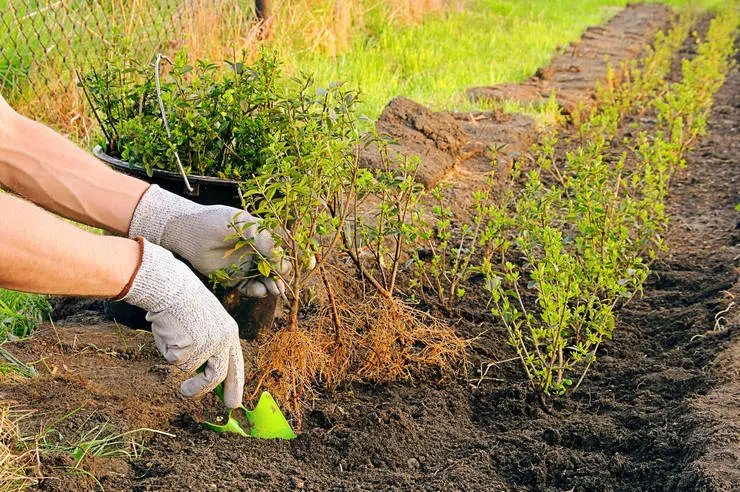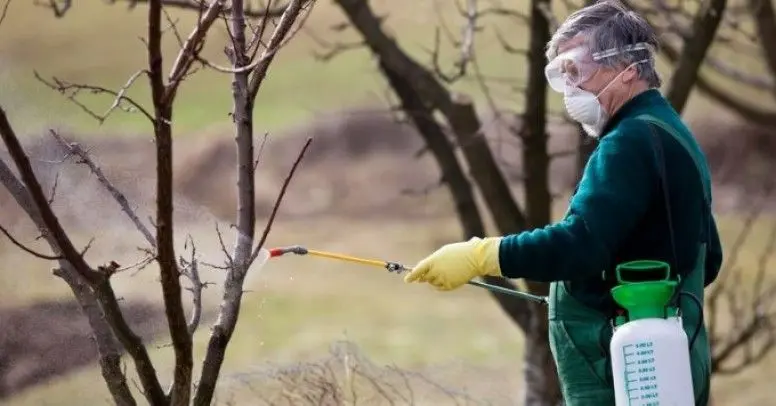Contents
Experienced gardeners know that the harvest of the next growing season is laid in the fall of the previous year. As the plants overwinter, so will the harvest. Therefore, do not neglect the preparation of fruit and flowering crops for the upcoming cold weather. Today we will tell you how to prepare the garden for winter.
Where to begin
The warm summer is over – it’s time to start preparing the garden and vegetable garden for wintering. The task of the summer resident is to correctly assess the condition of the plants growing on the territory of the summer cottage and correctly distribute the upcoming work. You need to start by preparing a working tool. In the process of processing the garden you will need:
- garden cart;
- shovel and bayonet shovels;
- rake;
- garden pruner and sharp knife;
- spray;
- covering material and homemade caps;
- protective gloves and overalls.

Experienced gardeners recommend that you first examine the trees and shrubs growing in the garden. It is necessary to identify plants injured by fungal and bacterial infections, as well as to detect crops damaged by rodents and harmful insects. It is possible that some trees and bushes can be saved by sanitary pruning and treatment with special preparations. Other plants need repotting and soil replacement.
Be sure to collect the entire crop from the site. Do not leave fruits on fruit trees and berry bushes. Over time, fruits and berries will fall to the ground and begin to rot, which can cause the development of diseases dangerous for plants.
So, we bring to your attention a brief overview of preparing the garden for winter for beginners.
Video “Preparing the garden for wintering”
From the video you will learn how to properly prepare the plants in the country for the upcoming cold and frost.
Cleaning
Fruit trees and shrubs growing in the garden, flowering and decorative perennials require special attention in the autumn. The next year’s harvest depends on the correct preparation of plants for the upcoming cold and frost. Failure to comply with pruning, watering, sheltering and fertilizing technologies can have irreversible consequences for plants.
You need to start preparing the garden for the upcoming cold and frost with cleaning. Autumn cleaning is a mandatory hygienic measure aimed at reducing the risk of fungal and bacterial infections. Leaving a beautiful and colorful carpet of leaves falling from trees on the territory of their summer cottage, novice gardeners endanger all garden crops. The fallen leaves provide an excellent hiding place for small rodents and harmful insects.

Collected dry foliage, shoots cut from shrubs and trees, rotten fruits can be used as a basis for compost. But leaves and branches affected by diseases and harmful insects cannot be used to fertilize the site and warm the plants. To prevent the reproduction of parasites and the spread of infectious agents, burn the collected branches and leaves outside the garden area.
Loosening and watering the soil
Autumn care for fruit and ornamental crops in the garden involves tillage. In the garden and between rows, the earth is dug up to a depth of 15–20 cm, around plants – by 10–15 cm. Loosening the soil helps to get rid of pests that prefer to winter in the ground, and also enriches the soil with oxygen and various useful substances. To increase fertility and improve the composition of the soil mixture, it is recommended to fertilize with potassium-phosphorus fertilizers. Nitrogen-containing preparations should not be used in the fall. In winter, trees should be in a state of rest and rest.

If the autumn turned out to be not too rainy, you need to take care of moistening the soil in the garden. Moisture-charging irrigation is carried out in early autumn, when the average daily air temperature is kept within 15 °C. Please note that the water used for irrigation is warm. Moistening plants with cold water can have negative consequences: the soil will not have time to dry out before the first frost, drizzle will appear in the air layers in the soil, the root will begin to freeze.
Plants are watered in several stages, the soil in the near-stem circle should be moistened to a depth of 80–100 cm. The approximate water consumption per adult tree is 50 liters. In the Crimea and Kuban, where winters are warm and dry, fruit orchards are more abundantly moistened.
Trimming trees and bushes
In autumn, when the process of sap flow in the branches slows down, pruning of fruit and flowering plants is carried out. This procedure helps to get rid of old, damaged and injured branches. During the period of rest and rest, trees and shrubs have time to recover, the wounds heal completely.

However, thoughtless crown pruning can have the opposite effect: plants stop growing and developing, the number of flowers and fruits is significantly reduced. When choosing a pruning scheme, it is necessary to take into account the varietal characteristics of each crop. So, rejuvenating pruning of a walnut provides for the removal of not only damaged shoots, but also old skeletal branches that are located at the bottom of the trunk. Mulberry, on the contrary, is difficult to recover after autumn pruning. Therefore, the crown is formed mainly in the spring, the removal of shoots in the fall is not carried out every year.
When sanitary pruning, you do not need to touch the young branches, which will give new shoots with the arrival of spring heat. Do not forget to carefully treat the resulting wounds with a solution of copper sulfate and garden pitch.
Transfer
Autumn is the perfect time to plant new seedlings and replant bushes in the suburban area. It is better to plant and transplant plants in September or October, so that the seedling has time to adapt and take root in a new place of growth.

When choosing new plants, it is recommended to pay attention to the varietal characteristics of crops and the climatic features of the growing regions. For example, some evergreen and exotic plants are best planted in the spring. A pomegranate seedling planted in open ground in the gardens of the Moscow region in autumn may not take root. But the pomegranate planted in the warm Crimea successfully cope with the first wintering. In the southern regions, planting persimmon seedlings with an open root system may be delayed until early November. As for central Our Country and colder regions, it is better to postpone this procedure until next year. Young trees of chaenomeles (Japanese quince) are planted in open ground only in spring. Autumn planting may not be successful, and the tree will die with the first severe frosts.
Protection against rodents
In winter, when there is not much food, hares and mice feed on the bark of fruit trees and shrubs. Rodents are especially fond of apple, hawthorn, quince, hazel, walnut, plum, apricot, pear, cherry and other stone fruits. Hares can damage not only the trunk of a tree, but also shoots up to 7 mm thick.
To protect the garden from rodent attacks, you need to carefully prepare the plants for wintering. First of all, the stems of trees and the bases of shrubs should be coated with lime with the addition of various odorous substances. This method of protection against hares and mice is ineffective, since closer to spring any smell disappears. A more reliable protection against pests is considered to be tying a tree trunk with burlap, agrofiber or roofing material. Plastic bottles can be used as a protective material.
Make sure that the plants covered with dark roofing material and plastic are not in the sun. The lack of air circulation under the influence of sunlight can lead to rotting of the plant stem.
Pest control
Autumn preparation of the garden for winter involves the treatment of fruit and flowering crops from harmful insects and various diseases. In October, when the foliage has not yet fallen, the garden is sprayed with a solution of urea (5%). For 5 liters of water you will need 250 g of urea. It is recommended to spray not only plants injured by diseases and insects, but also healthy-looking crops. All plants in the garden should be protected, as spores of fungal infections quickly spread from one tree to another.
After harvesting the leaves, the turn of soil cultivation in the near-stem circle comes. For the treatment of flowering perennials, deciduous and fruit trees, a 7% urea solution is taken. Spraying the soil is carried out with a more concentrated solution: 5 g of urea is needed for 350 liters of water.

Instead of urea, you can use a soap solution with the addition of soda ash. To prepare a protective agent against pests and diseases, you will need 10 liters of water, 30 g of crushed laundry soap and 300 g of soda ash.
In order to prevent and combat parasitic individuals and pathogens of various infections, it is recommended to use special preparations. Contact and systemic fungicides are highly effective in the fight against scab, powdery mildew, coccomycosis, late blight and other diseases:
- Anthracol;
- “Gart”;
- “Topaz”;
- Fundazol;
- “Debut”.
Against harmful insects, insecticidal preparations “Aktellik”, “Aktara”, “Calypso”, “Caesar” and others are used.
In regions where the first frosts can be expected in mid-autumn, trees and shrubs are sprayed much earlier. So, in Siberia and the Urals, the processing of an orchard from pests and diseases is carried out in September.
Shelter
Insulation of plants protects from wind, frost and glaciation. Many novice gardeners incorrectly believe that all crops growing in the garden need to be covered. Roses, clematis, rhododendrons, callas, large-leaved, oak-leaved and rough hydrangeas, Sargent’s hydrangea, Chinese privet and oval-leaved, viburnum, St. John’s wort, honeysuckle, grapes, boxwood, cypress, thuja, etc.
Spruce branches, coniferous branches, dry foliage and sawdust are used as a covering material. Such insulation is suitable for the Volga region, Kuban, Krasnodar Territory and Crimea. Plants in the northern regions are covered with agrofibre, non-woven material, roofing felt and other denser materials.










